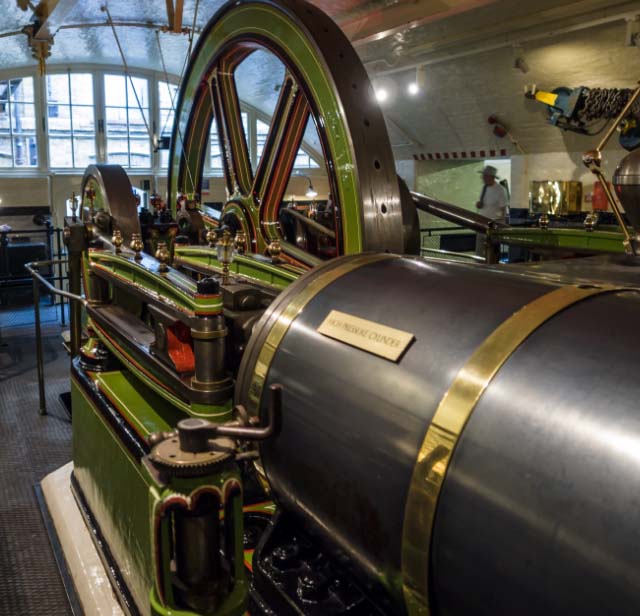The Tower Bridge Exhibition
Tower Bridge is one of London’s most iconic landmarks and is perhaps the most famous bridge in the world – so a visit to the Tower Bridge Exhibition is a perfect excursion for visitors to the city. As well as allowing you to visit a London icon, with impressive views of the city, the exhibition also gives you a glimpse of London’s past and a view of the stunning engineering of the Victorian age.
Not to be confused with the much plainer London Bridge, Tower Bridge was completed in 1894 and was known by Victorians as the ‘Wonder Bridge.’ Then costing £1,184,000 and taking eight years to build, it was the largest and most sophisticated bascule bridge ever built. Operating like a drawbridge (bascule means ‘see-saw’ in French), in the 1890s the crossing would be opened 20 to 30 times a day, allowing tall ships to pass beneath to carry cargo to London’s docks.
The entrance to the exhibition is in the bridge’s northwest tower. On reaching the top of the tower via a lift, visitors are presented with century-old footage of the bridge opening, dating back to 1904, along with images of Victorian London at the time of the bridge’s construction.
Visitors can then progress to the bridge’s high-level walkways, which are home to one of the exhibition’s top attractions: the views that it affords of London. Sitting in the centre of town, the bridge’s towers look immediately over City Hall, with westward views also catching The Shard and the Gherkin, and, farther away, St Paul's Cathedral. Meanwhile, looking eastwards, you can see Canary Wharf sitting in the distance in London’s Docklands.
Once guests have seen London from above, they are then invited to head downstairs to the engine rooms, to see how the original Victorian bridge worked. This process used immense amounts of steam power to lift the bascules, allowing river traffic to pass underneath – each week, the bridge’s machinery would consume 20 tons of coal. It wasn’t until the 1970s that the steam engines were replaced by electric equipment. Using modern technology, the system could then be run by 12 people rather than a staff of 80.
At present, the bridge opens several times a day, so be sure to catch it, either from the banks of the river or, if you time it right, from directly above, from the bridge’s high-level walkways. You can check the bridge’s opening times on the exhibitions webpage. If you do want to catch it though, make sure that you’re prompt – the bridge takes 60 to 90 seconds to open and the whole process of opening and closing only takes 7 minutes.
The exhibition also offers a range of additional facilities including guide books and a highly-rated virtual reality tour, as well as a well-stocked gift shop in case you needed to get ahold of presents for anyone at home – or mementoes for yourself.
Free and Fast Track Entry to The Tower Bridge Exhibition - Save £9.80pp with The London Pass

